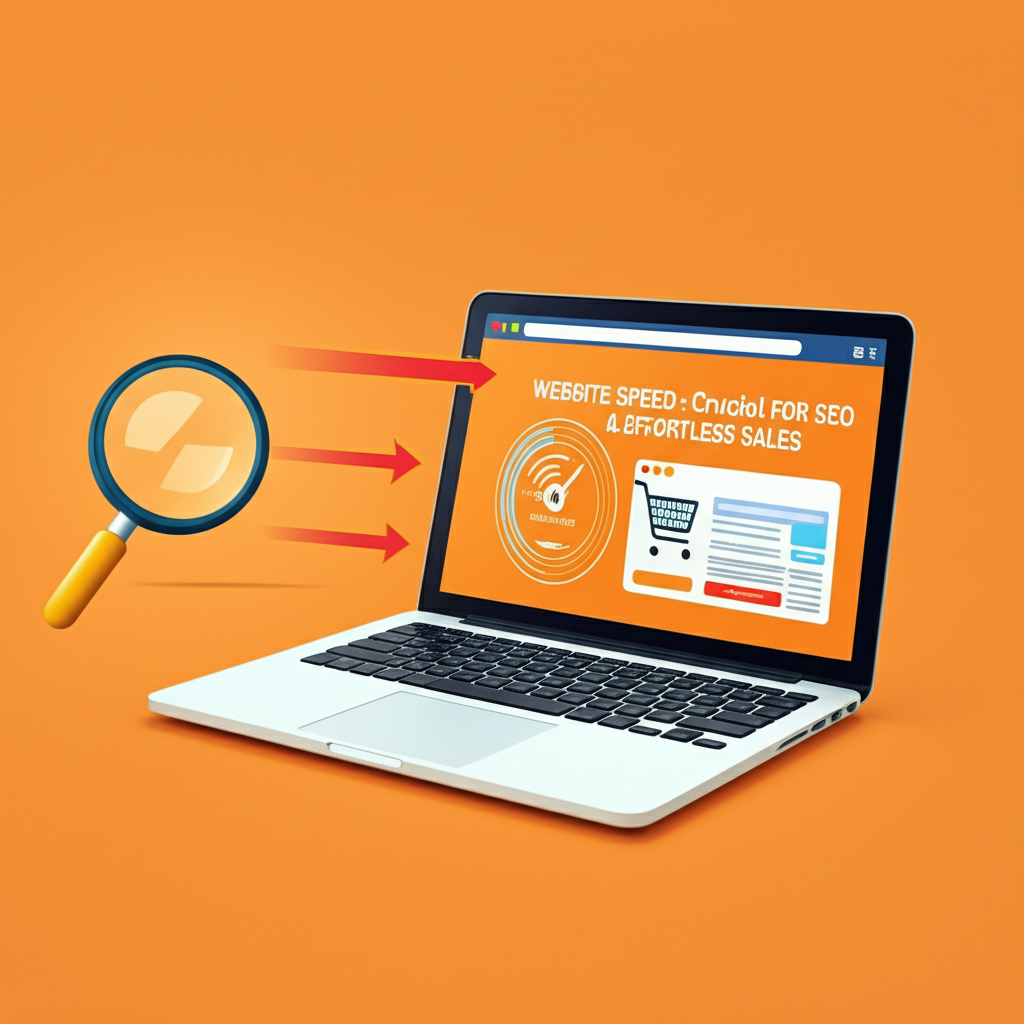- Why Website Speed Matters for SEO
- How Google Uses Website Speed
- Optimizing Website Speed for Effortless Sales
- Impact of Website Speed on Conversions
- Website Speed: Best Practices for Improved Performance
- Keeping Website Speed a Priority
Website Speed: Crucial for SEO & Effortless Sales
Website speed plays a pivotal role in both your search engine optimization (SEO) efforts and your ability to convert visitors into paying customers. A slow-loading website can frustrate users, leading to higher bounce rates and ultimately, lost sales. In today’s fast-paced digital world, patience is a rare commodity, and users expect websites to load almost instantaneously. If your site takes too long, they’ll simply click away to a competitor’s, leaving you with nothing but missed opportunities.
Why Website Speed Matters for SEO
Search engines, particularly Google, consider website speed a critical ranking factor. They prioritize providing users with the best possible experience, and a slow website detracts from that experience. Therefore, a faster website is more likely to rank higher in search results, making it more visible to potential customers. This increased visibility translates to more organic traffic, leading to greater brand awareness and increased potential for conversions.
How Google Uses Website Speed
Google’s algorithms are constantly evolving, but the core principle remains consistent: user experience is paramount. Page speed directly impacts user experience, and Google uses several metrics to assess this, including:
First Contentful Paint (FCP): This metric measures the time it takes for the main content of a page to become visible. A faster FCP indicates a more responsive website.
Largest Contentful Paint (LCP): LCP measures how long it takes for the largest content element on the page to load. This usually corresponds to the main image or video, providing a better understanding of the user’s perceived load time.
Time to Interactive (TTI): This metric gauges how long it takes for a page to become fully interactive, meaning users can click buttons, scroll, and interact with the content without delay.
By optimizing these metrics, you can improve your website’s ranking and ensure a smoother user experience.
Optimizing Website Speed for Effortless Sales
A fast website isn’t just good for SEO; it’s crucial for driving sales. When a potential customer lands on your site, they expect a seamless and efficient experience. A slow website creates friction in the buying process, leading to frustration and abandoned carts. Conversely, a fast-loading site promotes a positive user experience, encouraging visitors to explore further and ultimately make a purchase.
Impact of Website Speed on Conversions
Studies have shown a direct correlation between website speed and conversion rates. Even small improvements in loading time can significantly impact your bottom line. For example, a one-second delay in page load time can lead to a 7% reduction in conversions. This might seem insignificant, but it can accumulate into substantial losses over time.
Website Speed: Best Practices for Improved Performance
Improving website speed is not a one-time fix; it requires ongoing effort and optimization. Here are some best practices to consider:
Optimize Images: Large image files are a common culprit for slow loading times. Compress images without sacrificing quality using tools like TinyPNG or ShortPixel. Use appropriate image formats (JPEG, PNG, WebP) and implement lazy loading for images below the fold.
Leverage Browser Caching: Caching allows browsers to store static resources like images, CSS, and JavaScript files, reducing the need to download them repeatedly. This speeds up subsequent visits to your website.
Minimize HTTP Requests: Each element on your webpage, from images to scripts, requires an HTTP request. Reducing the number of requests by combining files and minimizing external scripts can significantly improve loading times.
Choose a Reliable Hosting Provider: Your hosting provider plays a significant role in your website’s speed. Opt for a reputable provider with robust infrastructure and optimized servers.
Use a Content Delivery Network (CDN): A CDN distributes your website’s content across multiple servers geographically closer to your users. This reduces latency and improves loading times, especially for users located far from your server.
* Minify CSS and JavaScript: Minification removes unnecessary characters and whitespace from your code, reducing file size and improving loading speed.
Keeping Website Speed a Priority
Website speed is not a static metric; it’s an ongoing process of optimization and refinement. Regularly monitor your website’s performance using tools like Google PageSpeed Insights or GTmetrix. These tools provide valuable insights into your website’s loading speed and identify areas for improvement. By consistently implementing best practices and staying proactive in your optimization efforts, you can ensure your website remains fast, user-friendly, and primed for conversions. This, in turn, will boost your SEO rankings, attract more organic traffic, and ultimately drive sales. Ultimately, prioritizing website speed is an investment in your online success.











Leave a Reply